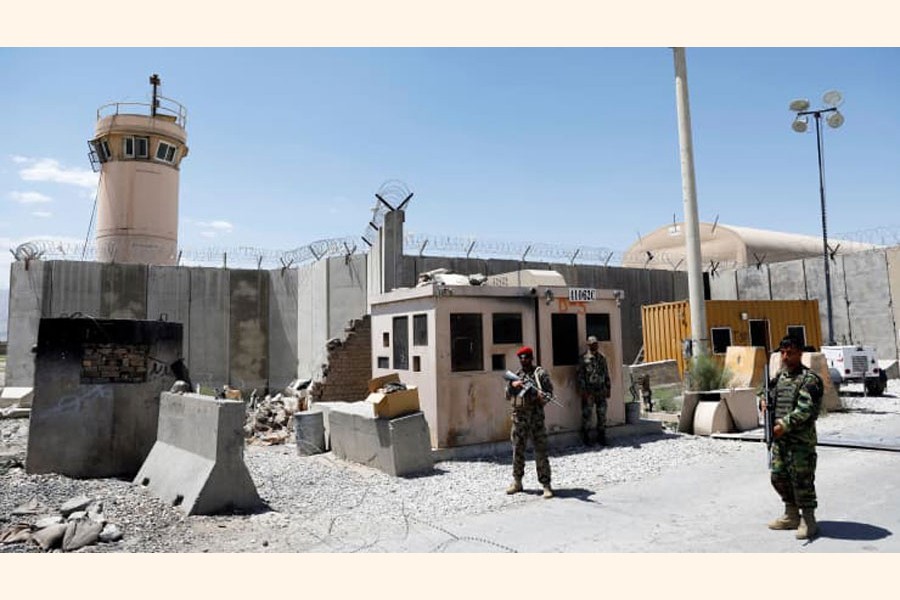The recent departure of United States (US) and NATO forces from Bagram Air Base near Kabul is highly significant in advance of the American military pull-out from Afghanistan two decades after an international coalition invaded that country in the wake of al-Qaeda attacks on the United States on September 11, 2001. It has been one of America's longest foreign wars, beginning at the height of the cold war with the Soviet Union in the 1970s, when President Carter began US assistance to anti-Communist Mujahideen.
As such, America's military involvement in Afghanistan is comparable to Vietnam before it withdrew in 1975.
More than two million Vietnamese from North and South, and 58 thousand Americans, died in America's Vietnam War. A Brown University study concluded that, as of April 2021, about 241 thousand people were killed in the Afghanistan and Pakistan war zone since 2001, including 71 thousand civilians. America's Afghan war casualties since 2001 tell us that a total of 2,312 service personnel have been killed, and more than 20 thousand wounded. Various estimates put the civilian death toll between half a million and two million people during the Soviet occupation of Afghanistan (1979-1989).
In 2019, Brown University also estimated the financial cost of the US war on terror at $6.4 trillion, and more than 800 thousand lives lost.
A combatant is likely to withdraw from war not necessarily because that side lacks military capability, but because the economic cost is too high, and popularity at home low. It happened in Vietnam in 1975. It is happening in Afghanistan now.
US combat troops had left South Vietnam two years before the American withdrawal was completed in April 1975. Troops left behind did not help South Vietnamese forces, who surrendered in Saigon shortly after all but a few Americans, and tens of thousands of South Vietnamese, had been evacuated by the US air force and navy.
Barely three months into office, President Biden last April announced the drawdown of all 2500 American troops from Afghanistan by September 11 this year, the 20th anniversary of al-Qaeda attacks on the United States. A few hundred troops would stay on to protect the American embassy in Kabul.
The announcement of a specific date apart, it was a continuation of Washington's policy, for the previous President Donald Trump had said that he wanted to bring all US troops back home.
Dire warnings were issued following the Communist victory in South Vietnam before reunification. Forty-five years on, questions must be asked about what lies ahead in Afghanistan, as the United States and other countries withdraw their contingents from the country.
The scenario in Afghanistan is radically different, not only because the Taliban, who have been fighting successive Afghan governments, and US-led international forces, are different. The terrain, complexity and diversity of Afghanistan, and its history of internal conflict, are also different.
The Taliban, a Pashtun-based militia, dominate large swathes of the Afghan countryside from north to south, historically their stronghold. They continue to receive support from elements of Pakistan's military, notably its intelligence services ISI. Since American and NATO troops began their withdrawal on May 1, dozens of Afghan districts have fallen under Taliban control. Taliban territory is rapidly expanding.
Witnesses report that the Taliban have been taking over district after district in the provinces of Baghlan, Balkh and Kunduz in the north - vast territories where non-Pashtun ethnic groups are spread over, with pockets of Pashtun communities. Key supply routes from Central Asia are nearby. Provincial capitals are surrounded by Taliban fighters. There are reports of government forces surrendering, and the Taliban acquiring heavy armament.
The Afghan government of President Ashraf Ghani is confused, and does not seem to know how to deal with the growing threat. In a long article recently, the New York Times reported: "With the Taliban advancing and US troops leaving, President Ashraf Ghani and his aides have become increasingly insular, and Kabul is slipping into shock."
There are large crowds at the government passport office, though visa options are severely limited.
The US decision to withdraw troops from Afghanistan has been made due to considerations of domestic politics and economy, not because the Afghan war is over. Actually, the war shows every sign of intensifying. A new humanitarian crisis looms.
The option of US air attacks against the Taliban is being kept open to defend Afghan government forces. It is to be seen whether bombers can do what more than 100 thousand strong US-led international forces once deployed in Afghanistan could not.
Deepak Tripathi is a Fellow of the Royal Historical Society and the Royal Asiatic Society of Great Britain and Ireland. The piece is excerpted from www.counterpunch.org


